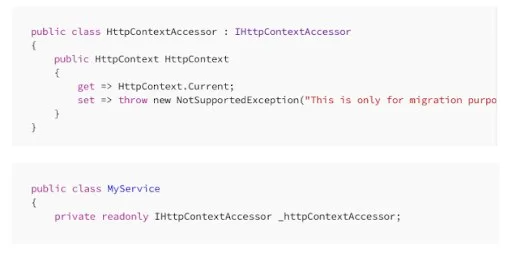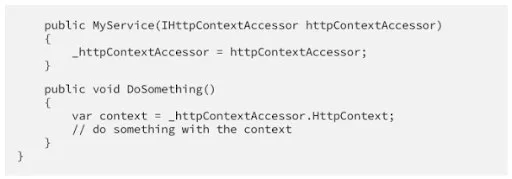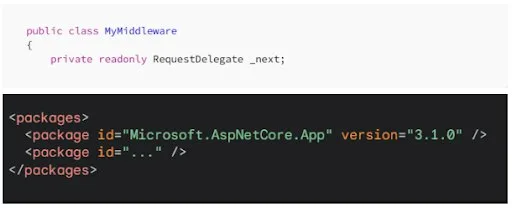- Overview
- Where and how to start?
- Steps to Migrate or Upgrade from .NET 4.8 to .NET 6
- Step 1: Prepare your development environment
- Step 2: Be ready to migrate to ASP.NET Core 6
- Step 3: Transfer your project files
- Step 4: Update NuGet Packages
- Step 5: Migrate Libraries
- Step 6: Migrate Code and Test
- Useful Links
- .NET 4.8 to .NET 6 Migration Checklist
Overview
Upgrading .net core 4.8 to 6 effectively allows users to improve their .NET Framework applications. They are migrating from .NET core 4.8 to .NET six, which offers complete access to the cross-platform capabilities, performance, and advanced features of .NET 6. With this guide, every user can become familiar with how to upgrade to .NET Framework and learn more about how to successfully migrate.
Where and how to start?
From a migration point of view, the application is quite ordinary. This is an application with an Angular frontend and a .NET Framework 4.8 server. The backend is divided into several projects, most of which are smaller tools such as library projects. There are also two ASP.NET Core web APIs and several Windows services that run in TopShelf, making an upgrade from .NET core 4.8 to .NET 6 a straightforward task.
Follow these steps to ensure successful .NET 6 migration:
- Research compatibility. Evaluate your existing .NET Framework 4.8 application for compatibility with .NET 6. Use tools such as the .NET Portability Analyzer to identify any API or framework dependencies that may not be supported in .NET 6.
- Dependencies. Check for third-party libraries, packages, and tools used in your application. Here you should make sure that they are all compatible with .NET 6, or find an alternative.
- Performance aspects. Identify the performance and optimization improvements that .NET 6 offers.
With these steps, you can effectively migrate your application from .NET 4.8 to .NET 6 and minimize the risks involved.
The .NET 6 migration process seems daunting, but it isn’t. You don’t have to do the hard work manually; all the good tools will do it for you. To better optimize your migration, you can use Microsoft’s Upgrade Assistant. This tool will be able to find possible incompatible NuGet packages and migrate current projects to the new format.
Incompatible packages will have to find a replacement. There are many packages, such as TopShelf, that are no longer compatible with .NET Standard 2.0
Microsoft’s Upgrade Assistant can also help you eliminate <Reference Include= “/> tags, as they are incompatible with .NET Standard 2.0.
Steps to Migrate or Upgrade from .NET 4.8 to .NET 6
To successfully migrate from .NET 4.8 to .NET 6, you need to complete several steps. This section provides detailed step-by-step instructions on how to upgrade to .NET 6.
Step 1: Prepare your development environment
To start the .net 6 migration process, you have to do the following:
What to do:
- Ensure your development environment .NET 6 is compliant.
How to do:
- To do this, make sure you have console applications without library links.
- Replace these applications with the following:

Expected Result:
You can now create and build .NET 6 projects and successfully upgrade from .NET 4.8 to 6 in Visual Studio without errors caused by missing SDKs or other tools.
But you need to do other things first if you have a console application that references libraries.
You can set TargetFramework to netstandard2.0. However, problems may arise here. If a value that was used in a library project is no longer compatible with .NET, you need to use dependency injection with the .NET Standard 2.0 library project. You can do this using an ASP.NET Web API project. You need to create an implementation and register it in the Autofac container.
Let’s consider such cases using the example of HttpContext.Current, instead of which we need to implement IHttpContextAccessor.


Until all of your library projects are migrated, you can do this one step at a time.
Step 2: Be ready to migrate to ASP.NET Core 6
Then proceed to the next step in .NET 6 migration:
What to do:
- Modify your existing .NET 4.8 project to match the new .NET 6 project to prepare for the migration to .NET 6.
How to do:
- Migrate external package references from your packages.config file to your project file in .NET 6 by using the Visual Studio Migrate packages.config to PackageReference option.

Expected Result:
At this point, most of your files will no longer exist and will need to be transferred manually. Most of them have multiple entry and exit points, which are now middleware, such as Begin_Request, End_Request. Use Windows from Microsoft to check API compatibility between the .NET Framework and .NET Core.
Step 3: Transfer your project files
What to do:
- Transfer the NET 4.8 to .NET 6 native resources to a new project file from a project built on top of the .NET 4.8.
How to do:
- Update the package references to the required version number for the new .NET project and to convert .NET core 4.8 to .NET 6.

Step 4: Update NuGet Packages
Then to move to the next step in the migration process:
What to do:
- It is important to update the NuGet Manager in Visual Studio.
How to do:
- Update the packages to .NET 6 compatible versions.
- Review any breaking changes or dependency conflicts.
Step 5: Migrate Libraries
What to do:
- Migrate all your libraries to .NET 6. since it has a richer API.
How to do:
- Simply change TargetFramework to net60 and you’re good to go.

Step 6: Migrate Code and Test
This is the last step in the migration process:
What to do:
- Test the code to ensure optimal performance.
How to do:
- After upgrading .NET core 4.8 to .NET 6 with platform-specific code and dependencies, retarget your project to .NET 6 by changing the TargetFramework property in your project files.
- You can also use Visual Studio’s refactoring tools to update your code syntax and APIs to meet .NET 6 standards.

Useful Links
For a successful transition to NET 6., you can use the following resources:
If you follow the instructions and use our materials, you can smoothly transition your project to a secure upgrade from .NET 4.8 to 6.
.NET 4.8 to .NET 6 Migration Checklist
We offer you a special checklist so that you can track the success of your migration and know exactly how to upgrade .NET core 4.8 to .NET 6:
- Preparation. The preparation process includes installing Visual Studio 2022+ and .NET 6 SDK and creating a backup copy of the project.
- Migration. To migrate .NET 4.8 to .NET 6, open the project in VS 2022+, update the file format, and migrate it to .NET 6. Then, update the NuGet packages, implement alternatives to replace incompatibilities, and improve the code.
- Testing. Test verification of various aspects of the system.
- Implementation. Implement configuration management after files are deployed.
Keep in mind that different tasks may vary depending on your project.












